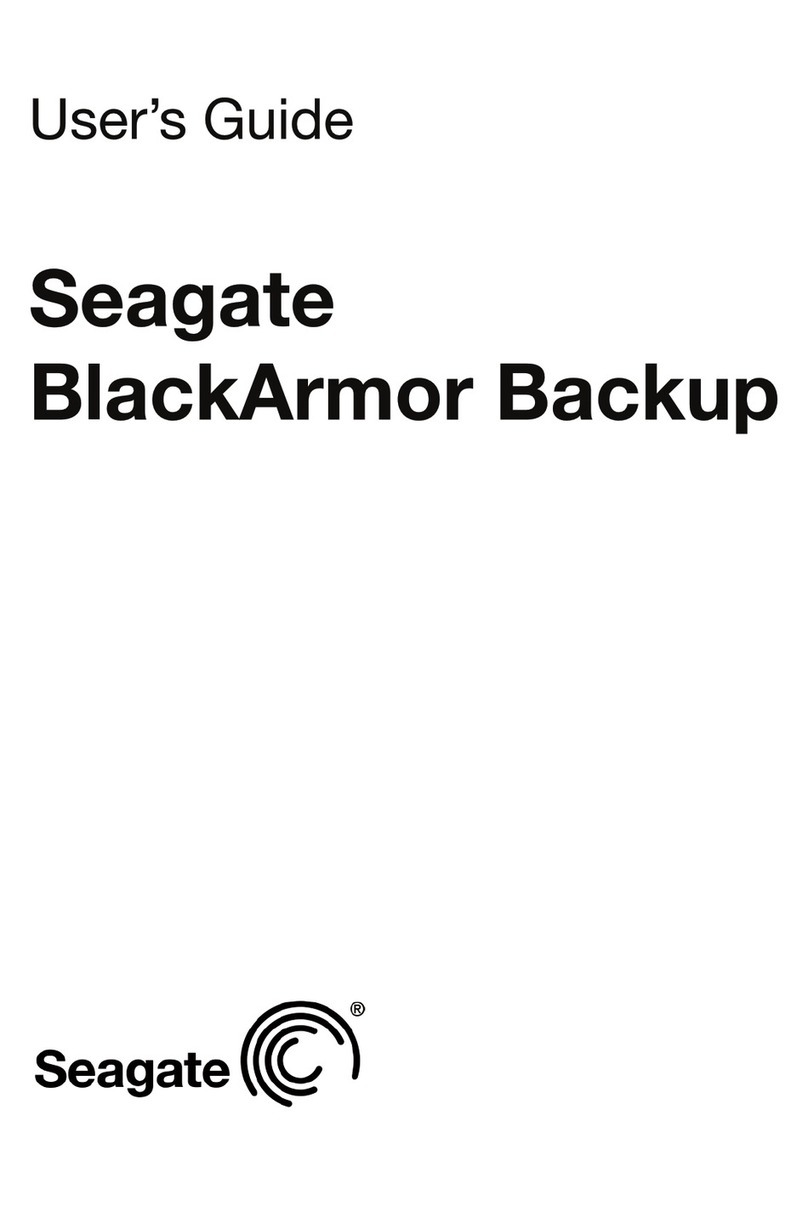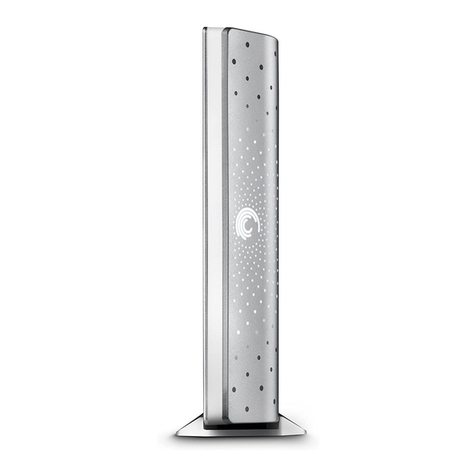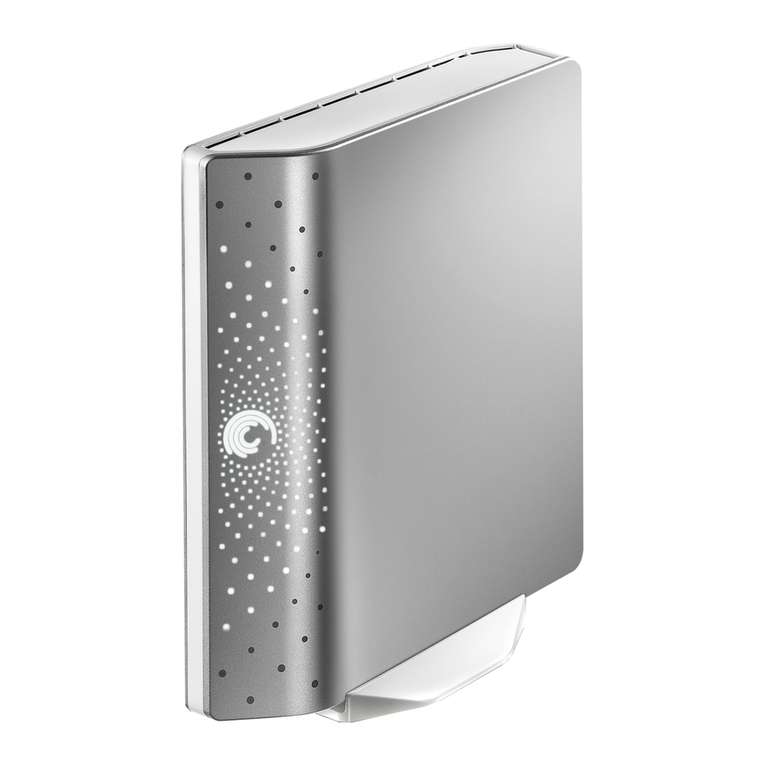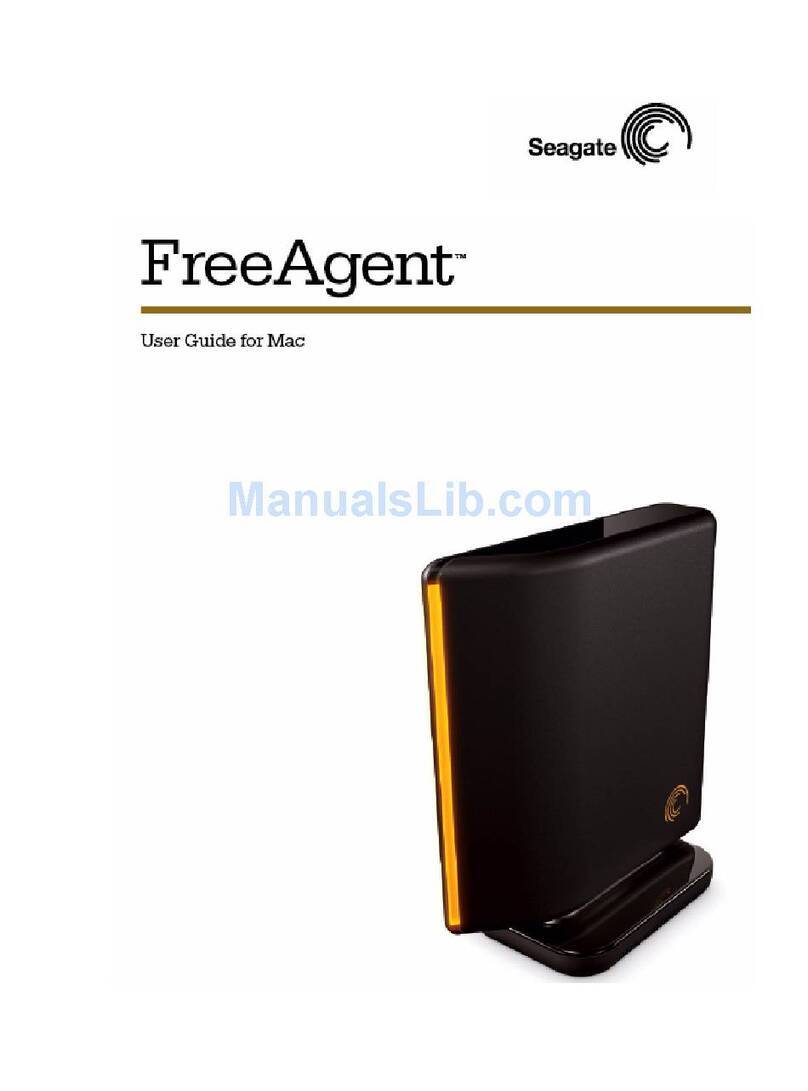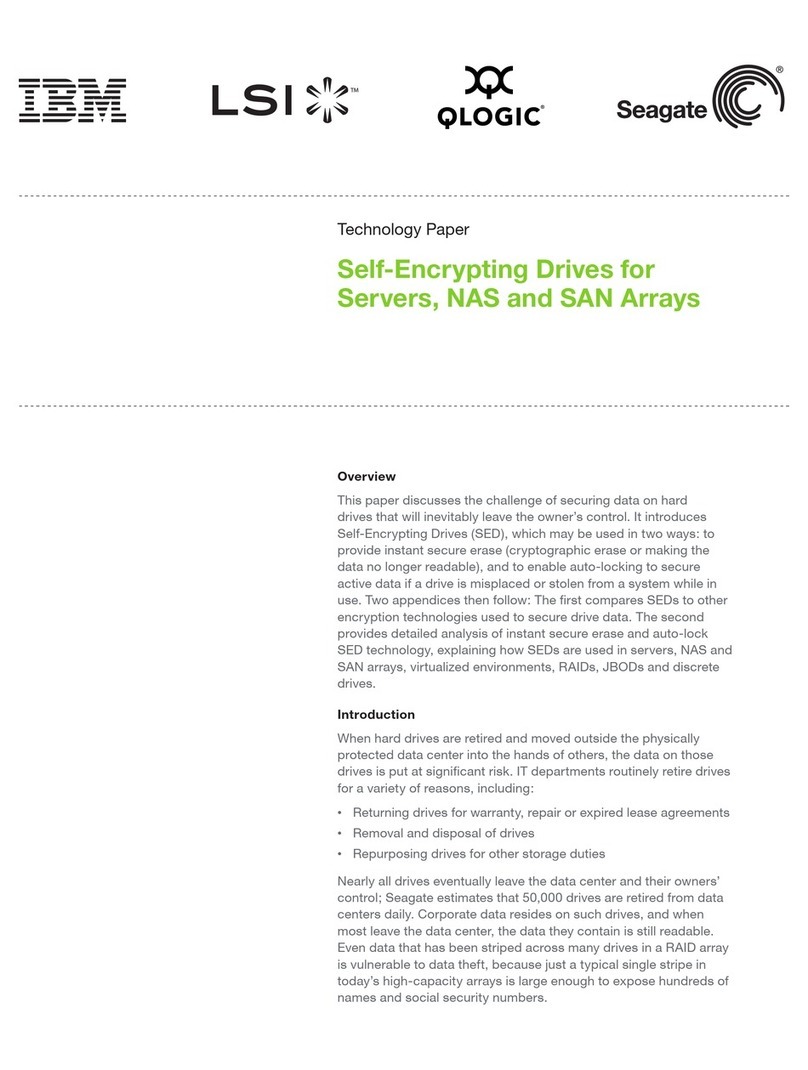
drive operations independently of other system
resources, making it difficult to compromise
or attack the drive. Seagate Secure
technology further strengthens the security of
a drive through authentication and a secure
communication infrastructure.
•Independent data processing unit. Hard
drives include powerful processors, high-speed
memory and multiple data ports. Seagate
Secure technology has very little, if any, impact
on the overall performance and speed of drives
or systems.
•Private code execution. Drive-level firmware
runs in isolation from other system resources
and cannot be manipulated or modified by
malicious code. Strong access control and
trusted communications ensure that only
authorized applications have access to security
functions for designated storage resources.
By protecting critical information where it lives,
Seagate Secure technology automatically and
transparently enables powerful data security.
Without any need for user intervention, all data
stored on the drive is protected at all times.
For example, if a system’s operating system is
compromised, the security functions are not
affected and will continue to protect the data.
The Seagate Secure platform gives organizations
a comprehensive data protection solution that is
easy to deploy and manage. Drives protected with
Seagate Secure technology reduce the overall
complexity of the IT security environment by
supporting complementary security applications.
Drive-level security operates transparently
and has few requirements for installation,
configuration and setup. Organizations can use
self-encrypting drives to create a standardized,
secure storage platform and streamline the
deployment process for data security regardless
of applications, operating system or hardware.
By facilitating the security of digital data
where it is stored, Seagate Secure technology
becomes a solid foundation for a secure IT
environment. Seagate Secure technology enables
the secure access, distribution and storage
of critical information through strong access
and authentication control, secure content and
application delivery, cryptographic functions,
protected storage, and secure erase and disposal.
Some of the solutions and benefits provided by
Seagate Secure technology include:
•Full disk encryption (FDE). This solution
automatically encrypts and decrypts all
the data that travels in and out of the drive.
Unlike other data encryption applications,
Seagate Secure encryption keys are
password-protected and never appear in the
clear or in any readable format on the drive.
•Drive pairing. Seagate Secure technology
allows users to “lock” a drive to a specific
system or host. This solution prevents the illicit
copying and distribution of the data if the drive
is removed and installed in another system.
•Secure partitions. Hidden storage, accessible
only by Seagate Secure-enabled software
applications, provides a secure environment
for additional drive-level security solutions,
including access control, ID and authentication,
anti-virus protection and token-free security.
•Secure erase and disposal. Encryption
combined with strong authentication simplifies
and secures hard drive disposal and reuse. Data
on an encrypted drive is only accessible when
the encryption key is enabled through a valid
password. If the encryption key is changed or
eliminated, all of the data is instantly rendered
inaccessible. Technicians can then safely
repurpose or dispose of the drive, without
compromising sensitive information.
Seagate Secure Technology Fundamentals
Seagate Secure technology comprises four
technologies: enhanced firmware, trusted send/
receive, secure partitions and issuance protocol.
Together these elements create a secure storage
solution. In addition, a software development kit
is available to help ISVs develop Seagate Secure-
enabled applications.
Enhanced Firmware
Firmware is the software that runs on the drive’s
internal computer; it is normally used to manage
extremely complex drive functions such as
moving the read/write heads, tracking bad sectors
on the disc and storing bitmaps of where data is
located. Seagate Secure technology extends a
drive’s capabilities with additional security code
optimized on the drive’s computing resources.
Seagate Secure technology implements a
cryptographic service provider on the drive,
3
Seagate Secure™Technology Enables
Robust Security Within the Hard Drive












